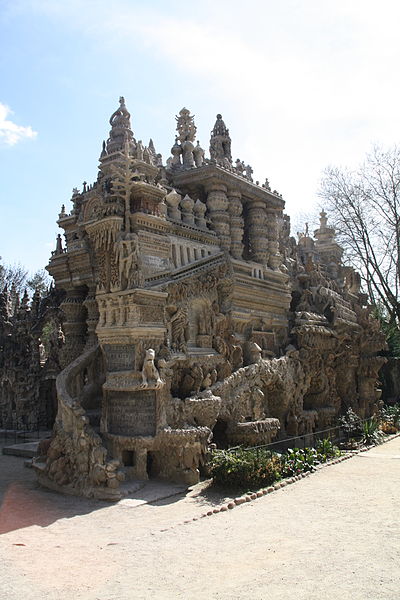Like the Flintstones, Only Better
In the movie The Shawshank Redemption (and if you haven’t seen it yet, stop reading, because I’m about to ruin it for you…)
(Really, it’s a fantastic movie — last warning…)
(Okay, let’s continue.)
In the movie The Shawshank Redemption, the protagonist, Andy Dufresne, is incarcerated. He tunnels through the prison’s walls slowly over the course of just under two decades. The whole idea seems fanciful: how could a single man armed with a tiny rock hammer, digging only under cover of darkness, possibly create an escape route? Of course, the movie (and the book it is based on) is fiction. Something like that could never happen.
But what about the opposite? Meet Ferdinand Cheval, a French postman who build the rock castle above all by himself. He couldn’t do it in the 19 years it took Dufresne to rock hammer his way out, though. Building the citadel above took Cheval 33 years.
In 1879, in his early- to mid-forties, Cheval was on his postal rounds in a village in the southeast of France named Hauterives, a route he frequented for a decade prior. According to PBS, he tripped over a rock — “hardly an unusual incident,” given the terrain. But Cheval, for some reason, decided to explore the offending stone. It was of unusual shape so he took it home with him, intent on examining it some more. The next day, he returned to that area and found more unusually shaped rocks, and took them home, too. Inspiration then set in, as Cheval — who didn’t have a formal education beyond age 13 — took to crafting what he’d call Le Palais Ideal (“the Ideal Palace”), a castle of limestone, concrete, and wire. When he was finished, it was an 85 foot (26m) long fortress reaching over 30 feet (ten meters) at its highest point. All built by hand by this otherwise nondescript postman.
The end result is extravagant in its detail as well as its size. The image above does not do it justice; click here for a much (much!) larger version. Even then, many features require further exploration. There’s a miniature Hindu temple, a Swiss chalet a fountain of sorts, and a lot more. The official site of Cheval’s massive creation, here, has images from each of the four facades. And despite the fact that the palace is off the beaten path, PBS claims that it receives 120,000 visitors each year, and the attraction is generally very well-rated per TripAdvisor.
Cheval completed the palace about a decade before his death in 1924. But despite his original wishes, he was not buried there; French law prohibited it. Instead, according to the New York Times, he spent much of the remainder of his life building a “complicated tomb” at a nearby cemetery, in which he is now interred.
Bonus fact: The Hope Diamond is a special stone — it’s a 45-carat diamond worth an estimated $200 to $250 million. But it, like Cheval’s stones, also has a connection to the postal service. In the Hope Diamond’s case, that connection stems from its acquisition by the Smithsonian Institute in 1958. A jeweler named Harry Winston donated the gem to the museum that year — and sent it via U.S. Mail, insured for just $145.29.
From the Archives: Before Oswald: The much worse “hobby” of another former postal worker.
Related: The Shawshank Redemption. Worth watching again. Easily.

